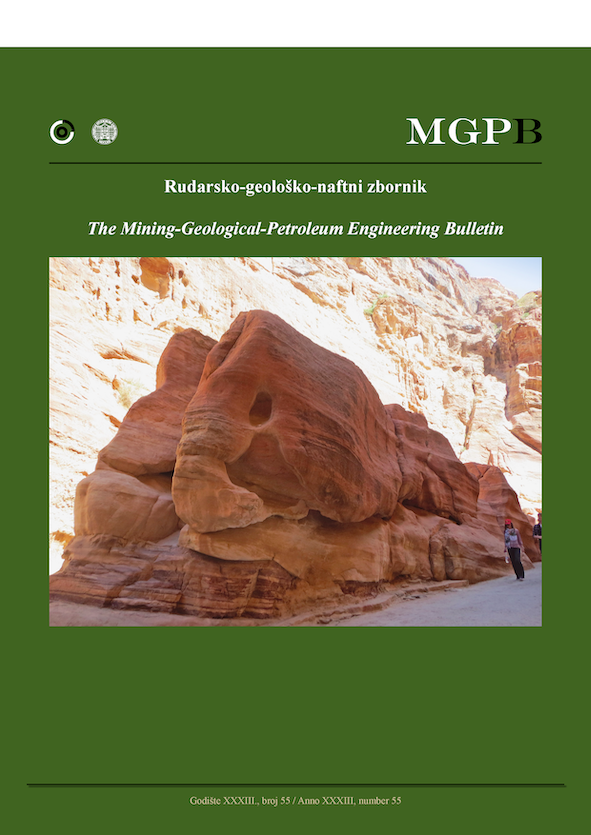Review of the land subsidence hazard in Pekalongan Delta, Central Java: insights from the subsurface
DOI:
https://doi.org/10.17794/rgn.2021.4.13Keywords:
land subsidence, Pekalongan, subsurface, alluvial deposit, compressibleAbstract
Land subsidence is a global threat to coastal areas worldwide, including the North Java coastal area. Of many areas experiencing land subsidence in North Java, the rate of land subsidence in Pekalongan has matched the high subsidence rates usually found in big cities. The rate of land subsidence in Pekalongan far exceeds the sea-level rise, resulting in a looming threat of land loss. The devastating impacts of land subsidence are the manifestation of its subsurface movement. Therefore, it is essential to understand the subsurface to elucidate the mechanism of land subsidence. Previous studies on land subsidence in Pekalongan are mainly related to subsidence rate monitoring and have not elaborated on the subsurface condition. This paper reviews the Pekalongan subsurface geology based on available literature to provide insight into the land subsidence problem. The results revealed that the land subsidence occurs in the recent alluvial plain of Pekalongan, consisting of a 30-70m thick compressible deposit.Possible mechanisms of land subsidence arise from natural compaction, over-exploitation of confined groundwater, and increased built areas. As the seismicity of the study area is low, tectonic influence on land subsidence is considered negligible. It is expected that the offshore, nearshore, and swamp deposits are still naturally compacting. As the surface water supply is minimal, over-exploitation of groundwater resources from the deltaic and Damar Formation aquifers occurs. In the end, future research direction is proposed to reduce the impacts of the subsidence hazard.
Downloads
Published
How to Cite
Issue
Section
License
Copyright (c) 2021 authors and journal

This work is licensed under a Creative Commons Attribution 4.0 International License.
Creative Commons-BY
Authors who publish with this journal agree to the following terms:
In agreeing this form, you certify that:
- You read the ethical codex of the RGN zbornik available at journal web.
- You submitted work is your original work, and has not previously been published and does not include any form of plagiarism.
- You own copyright in the submitted work, and are therefore permitted to assign the licence to publish to RGN zbornik.
- Your submitted work contains no violation of any existing copyright or other third party right or any material of an obscene, libellous or otherwise unlawful nature.
- You have obtained permission for and acknowledged the source of any illustrations, diagrams or other material included in the work of which you are not the copyright owner.
- You have taken due care to ensure the accuracy of the work, and that, to the best of your knowledge, there are no false statements made within it.
- All co-authors of this submitted work are aware of, and in agreement with, the terms of this licence and that the submitted manuscript has been approved by these authors.
Publication licence
You retain copyright in your submitted work, according to journal license policy (CC-BY). By signing this form you agree that RGN zbornik may publish it under the publication licence. In summary the licence allows the following:
Anyone is free:
- To copy, distribute, display, and perform the work.
- To make derivative works.
Under the following conditions:
- The original author must always be given credit.
- The work may not be used for commercial purposes.
- If the work is altered, transformed, or built upon, the resulting work may only be distributed under a licence identical to this one.
Exceptions to the licence
In addition to publishing the work printed under the above licence, RGN zbornik will also enable the work to be visible online.
The journal editorial can change the licence rules anytime but it cannot retroactively restrict author(s) rights.


